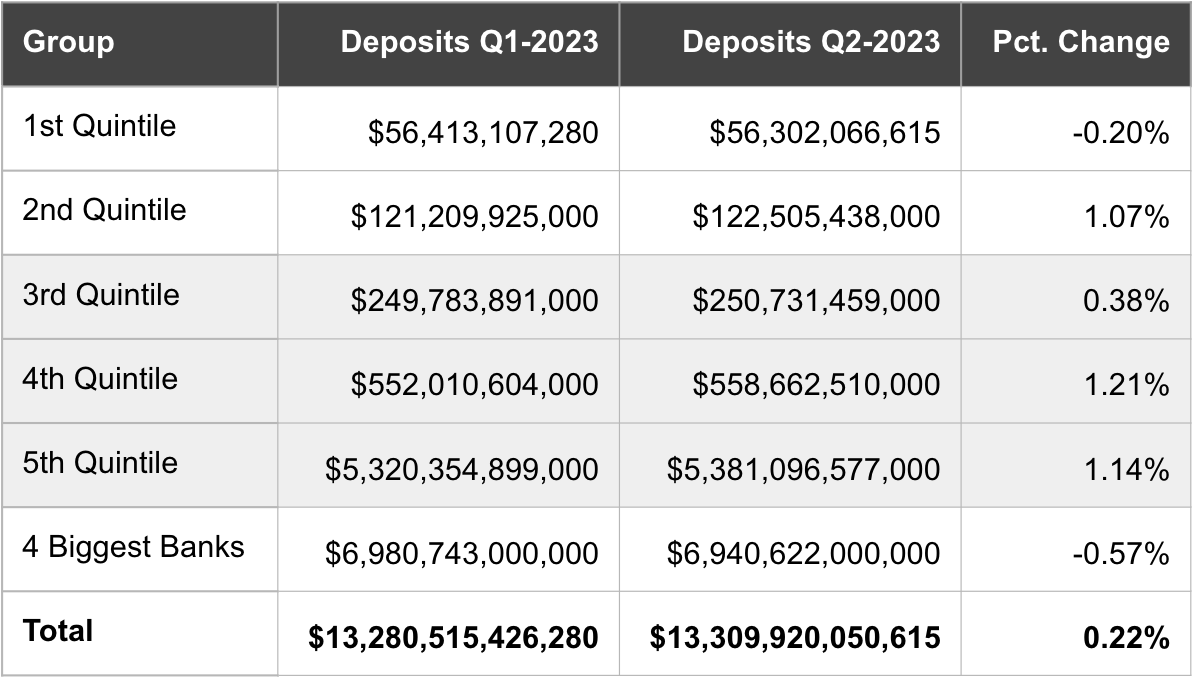Calcbench has been running a side project for the last few months tracking deposits at publicly traded banks. All such banks report their total consumer deposits every quarter, so we built a spreadsheet tracking deposit disclosures to see how the microburst of bank failures earlier this year might affect consumer deposit patterns.
In total, the spreadsheet tracks more than 360 banks, from tiny Catalyst Bancorp ($CLST) with $263 million in assets, to JPMorgan Chase ($JPM), the biggest of them all with $3.6 trillion in assets.
So what did deposit activity look like in Q2 2023?
First, total deposits for the group went from $13.28 trillion to $13.31 trillion, an increase of 0.22 percent. That number alone, however, doesn’t tell us much since so many banks are in our analysis group. So we split the group into six groups:
- The four largest banks, which each have more than $1 trillion in assets: Wells Fargo, Citigroup, Bank of America, and JPMorgan;
- Five other quintile groups of about 68 banks each, sorted from smallest in assets to largest.
The results are in Figure 1, below.

As one can see, the banks with the biggest decline in deposits were those big boys of Wall Street! Of the four in that group, only JPMorgan saw an increase in deposits, of 0.91 percent. Citi, BofA, and Wells Fargo all had declines that ranged from 0.8 to 1.74 percent.
Perhaps that’s not surprising. The big banks have made a conscious choice to keep interest rates on savings accounts low. If consumers don’t like that they can go elsewhere for higher rates, and presumably some consumers are doing just that — but why would the big banks care? A huge number of customers would need to abandon them for greener pastures before those banks felt any serious crimp in their business; huge enough that the banks themselves would be able to see that problem looming and respond with more competitive rates.
So for now, the big boys can afford to keep interest rates low and alienate a few depositors. That’s not going to jeopardize their operations.
More interesting is that four of our five quintiles also saw increases in deposits. Five months ago, the expectation had been that we’d see a flight to stability, as depositors pulled their money from small and mid-sized banks and put it into the larger, more stable big boys.
That doesn’t seem to have happened. What will Q3 numbers tell us? Check back in another three months or so and we’ll all find out.